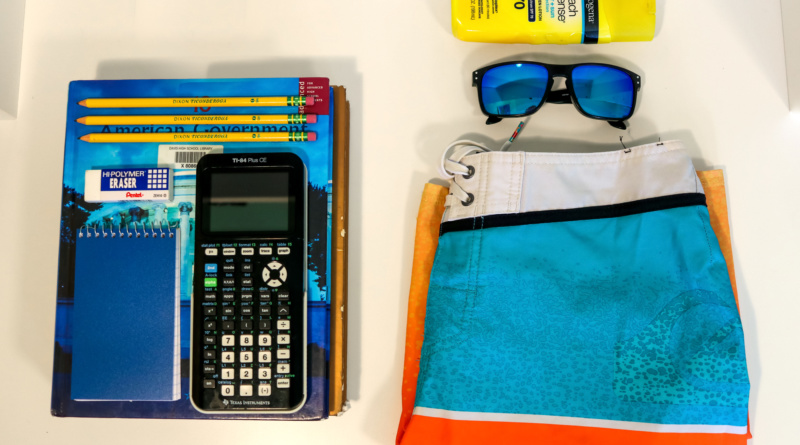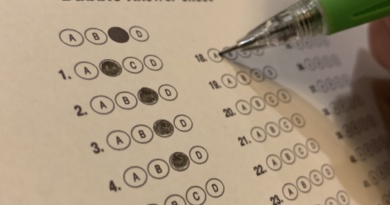OPINION: Should the 2020-21 school year begin earlier?
PHOTO: While some want to lengthen in-person schooling, others argue for a normal summer vacation and school year.
PRO: Extend school for learning equity
By Allyson Kang,
BlueDevilHUB.com Editor–
After the Coronavirus (COVID-19) pandemic forced school closures, districts across the nation have established online distance learning. Some schools, struggling to get technology access to every student, have taken much needed breaks to catch up. Because of the lost time and the overall ineffectiveness of virtual learning, in-person education should be lengthened to close the learning gap.
According to preliminary estimates in April by Megan Kuhfeld and Beth Tarasawa of the Northwest Evaluation Association, “students will return in fall 2020 with roughly 70 percent of the learning gains in reading relative to a typical school year […] in mathematics […] returning with less than 50 percent.”
Without retaining some foundational knowledge, students cannot learn any new material next year too, as skills are built on those taught the previous year. Many classes provide a quick review of material at the beginning of the year, but they will probably not be able to make up such a huge loss.
The learning loss will not be made up through virtual classes either. Currently, distance learning has only been exacerbating socio-economic education gaps because it requires high-speed internet and access to technology.
For example, the EdWeek Research Center conducted surveys of 2,600 school district workers that found that while teachers in lowest poverty schools reported that 12 percent of students were not in contact, those from the highest poverty schools reported that a whopping 32 percent were essentially “truant.”
For those that do have access to both internet and technology, the lessons are not enough. While school districts and teachers are often doing the best they can, virtual lessons are just not as effective as regular teaching.
What will make up the learning loss is a greater amount of normal schooling, whether that be through starting the school year earlier, summer school or other extensions of regular class.
At an April 28 press conference, Gov. Gavin Newsom announced that he was considering starting the school year early.
“We are concerned about this [learning loss] even into the summer so we are considering the prospect of an even earlier school year into the fall, late July or early August,” Newsom said. “I am looking forward to those robust conversations about the prospect of an earlier school year that I do think is warranted considering the consequences of neglecting [the] next generation.”
While there are issues with an earlier school year, like staff pay or cutting into summer vacation, the threat of the learning gap looms even larger. For students, the extra time could serve as an extended review session of necessary concepts. The Davis Joint Unified School District summer schools usually end at the beginning of August, so an earlier start would not interfere with their schedule.
However, if an earlier school year will threaten public health or cause significant problems, there are other options. What is important is for us to start a discussion on how to lengthen regular schooling to make up for the loss of learning from the ineffectiveness of virtual school and school days missed during breaks.
CON: Health risks outweigh learning loss
By Priscilla Lee,
BlueDevilHUB.com Editor–
Stay-at-home order. Distance learning. Online AP tests. And as of last week, there’s talk of the 2020-21 school year being moved up a month earlier than usual from Gov. Gavin Newsom.
Online methods are undeniably insufficient for adequate learning; teachers can’t relay all the information for their courses to their students as classes only meet once a week and most of the material is cut down. Due to this, a regular summer break should be given as to ease anxieties and prepare for improved online teaching or the possible reopening of school in the fall.
The main issue for reopening schools is making sure students have equal opportunities to access education while also maintaining the social distancing guidelines to mitigate the spread of coronavirus (COVID-19).
On May 8, Superintendent John Bowes posted a message on the Davis Joint Unified School District website stating that as of the current situation, schools will reopen on Aug. 26. Both in-person class and distance learning models are being crafted to prepare for different scenarios.
If schools quickly reopen, questions of how social distancing guidelines will be enforced in the classrooms arise. Other school districts have come up with suggestions of staggering class times and rotating students between online and in-person classes.
However, starting school on campus too soon could lead to a huge outbreak from individuals who are asymptomatic, possibly exposing those who are immunocompromised or vulnerable.
During the swine flu epidemic in 2009, 1,100 schools in 23 counties in California reported having more than 10 percent of students not come to school. This means that even if schools did return, parents may not be willing to send their kids to school at the risk of contracting the virus.
Extending school to make up instructional time would also entail a longer school year to fit all the information students have missed. This brings up the issue of how teachers are going to be paid for the extra time they will put in to quickly implement their courses online and for the extra days of teaching.
It’s expensive to pay teachers for extra days, as just one day would cost about $123 million for California alone. Under the Coronavirus Aid, Relief, and Economic Security (CARES) Act, K-12 schools in the state will receive a approximate total of $1.65 billion, of which an estimated $603,510 will go to DJUSD by July 1, which should go to providing meals and technology for students in need instead of precarious preparation for in-person class.
In addition, shortening summer break would lead to students having limited time for camps and classes they dedicated time and effort to apply for, which would increase their worries about college entrance.
Students are feeling restricted and overwhelmed as it’s now impossible to separate personal and school life. Although it may seem students are just squandering their time at home, in reality they are relearning how to balance their schedule to fit academics, family, friends and alone time, while also making sure they don’t strain their eyes by looking at a screen for excessive periods.
Distance learning will most likely continue into the next school year, so it’s crucial to give students and teachers time to optimize their experience. Life will definitely not return to normal even when the stay at home order is lifted, but until a vaccine is found, schools should stick to their regular schedules rather than rush into a new school year head-on.




